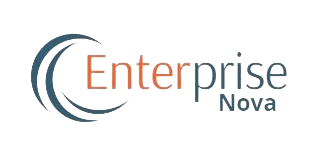Imagine an internet that provides you with exactly the information you need, even if your search prompt is very vague. Yes, that is Web 3.0. As an upgrade to Web 2.0, Web 3.0 introduces a more innovative, convenient, and safe approach for users to interact online. It reflects the ideal internet experience that users have long desired. Web 3.0 cannot be properly defined without highlighting its features, which include decentralization, Artificial Intelligence (AI) and machine learning, data ownership, and interoperability.
Features of Web 3.0
Decentralization
At the heart of Web 3.0 lies the principle of decentralization, which involves shifting control and authority over digital assets from a single entity and allotting them across several nodes. Unlike Web 2.0 platforms, which are often controlled by a single entity, Web 3.0 businesses use decentralized systems like Decentralized Finance (DeFi) to provide person to person communication without the need for middlemen. By incorporating decentralized systems, Web 3.0 companies promote transparency, resilience, and censorship resistance.
AI and machine learning
Another essential element driving Web 3.0 is AI and machine learning technologies. These technologies guarantee that data from various platforms can be interconnected and comprehended contextually by machines. This improved understanding and responsiveness allows for advanced search functions, making it easier for users to quickly access more pertinent information online, which in turn opens up possibilities for more comprehensive and interconnected web applications.
Data Privacy
Another hallmark of Web 3.0 is the emphasis on data privacy. In many web spaces, user data is often collected, stored, and monetized by centralized platforms without users’ consent. By using decentralized storage solutions and cryptography, Web 3.0 enables people to take ownership of their details and allow access selectively through centralized identification systems and data trading systems. This shift towards data control not only enhances user privacy, but also fosters trust and accountability in web dealings.
Interoperability
Interoperability is another critical characteristic of Web 3.0, as it enables seamless communication and collaboration across different systems and networks, unlike the strict landscape of Web 2.0, where siloed platforms often hinder data exchange and innovation. This improved data connectivity provides advanced search capabilities, helping users locate relevant information more quickly.
Comparison between Web 2.0 and Web 3.0
Concerns surrounding Web 3.0
- Several Web 3.0 platforms experience issues with sluggishness and congestion, leading to increased fees and delays. This creates difficulties for these platforms in managing a large number of users simultaneously.
- Laws and regulations for Web 3.0 are not clear yet, making it hard for developers and users to know what is allowed. This can slow down the growth of these technologies.
- Web 3.0 applications may pose a challenge for individuals who lack technical proficiency. Dealing with private keys and smart contracts can be difficult to navigate
- It is tough to follow laws in decentralized systems, especially rules about preventing money laundering and verifying users’ identities.
- In the wake of recent disappointments from various Web 3.0 initiatives, the focus is shifting towards ensuring the protection of consumers and investors for regulators and the public.
Examples of Web 3.0
- Platforms like OpenSea and OpenBazaar allow people to buy and sell directly with each other without using middlemen. They use blockchain technology to make sure transactions are secure and clear.
- Browsers like Google Chrome, can be integrated with various extensions, like MetaMask. Compared to standard web browsers, these applications provide users greater privacy, security, and control over their data.
- Ethereum and Bitcoin are other examples of web 3.0. They allow peer-to-peer financial exchanges on a global scale and enable decentralized transactions to happen globally without the need for middlemen.
Future Expectations
It is evident that we are just getting started with Web 3.0 and other emerging technologies.
- In the upcoming days, we can expect a significant increase in the usage of Web 3.0.
- Additionally, there will no longer be a need for permissions. That is, anyone will be able to access its services without authorization.

